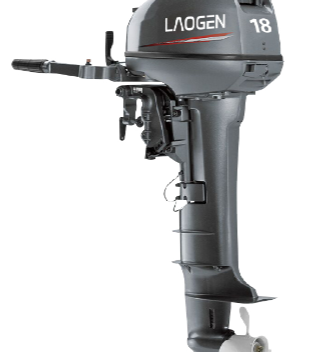In the world of marine propulsion, the emphasis on stability and smooth handling remains paramount. Outboard engines, serving as the powerhouse for countless boats, are continually evolving to provide an increasingly stable and controlled experience for boaters of all levels. This evolution is not marked by extravagant claims of perfection or revolutionary breakthroughs, but rather by a steady dedication to refining existing technologies and enhancing the overall performance of these crucial components of marine vessels.
One of the key aspects driving the development of outboard engines is the quest for improved maneuverability. Whether navigating through choppy waters or executing precise turns, boaters rely on the responsiveness and agility of their outboard engines to ensure a safe and enjoyable experience on the water. Manufacturers recognize this demand and have focused their efforts on fine-tuning the design and functionality of outboard engines to deliver optimal control and stability in a variety of conditions.
At the heart of these advancements is a nuanced understanding of hydrodynamics and propulsion mechanics. Engineers work tirelessly to optimize the shape and configuration of outboard engine components, such as propellers and lower units, to enhance turbulence and enhance efficiency. By carefully balancing factors such as blade geometry, pitch, and diameter, they strive to achieve a harmonious interaction between the engine and the surrounding water, resulting in smoother acceleration, improved fuel economy, and reduced vibration.
Moreover, advancements in electronic controls have played a significant role in enhancing the stability of outboard engines. Integrated systems now offer features such as electronic throttle and shift (ETS), power steering, and advanced steering assist, providing boaters with greater precision and confidence in their maneuvers. These electronic aids not only improve the overall handling of the vessel but also contribute to a more enjoyable and less fatiguing boating experience.
Another area of focus in the quest for stability is noise reduction. The relentless hum of an outboard engine can detract from the tranquility of the marine environment, disrupting both the experience of the boater and the natural habitat of marine life. Manufacturers have invested in sound-dampening technologies and vibration-isolation systems to reduce noise and vibration levels emitted by outboard engines. Through careful engineering and material selection, they strive to achieve a quieter and more serene boating experience without compromising on performance.
Safety is, of course, a paramount concern in the design and operation of outboard engines. As such, manufacturers are continually integrating new safety features and redundancies to ensure reliable performance in a wide range of conditions. From enhanced cooling systems to robust corrosion protection, every aspect of outboard engine design is scrutinized to mitigate the risk of mechanical failure and ensure the safety of both the vessel and its occupants.
In conclusion, the pursuit of stability in outboard engine technology is a journey marked by steady progress and incremental improvements. Through a combination of advanced engineering, electronic controls, and a commitment to safety and environmental responsibility, manufacturers are delivering outboard engines that offer unparalleled stability and control on the water. As boaters continue to demand a smoother, more enjoyable experience on the water, the evolution of outboard engine technology will undoubtedly continue, driven by a shared vision of innovation.



